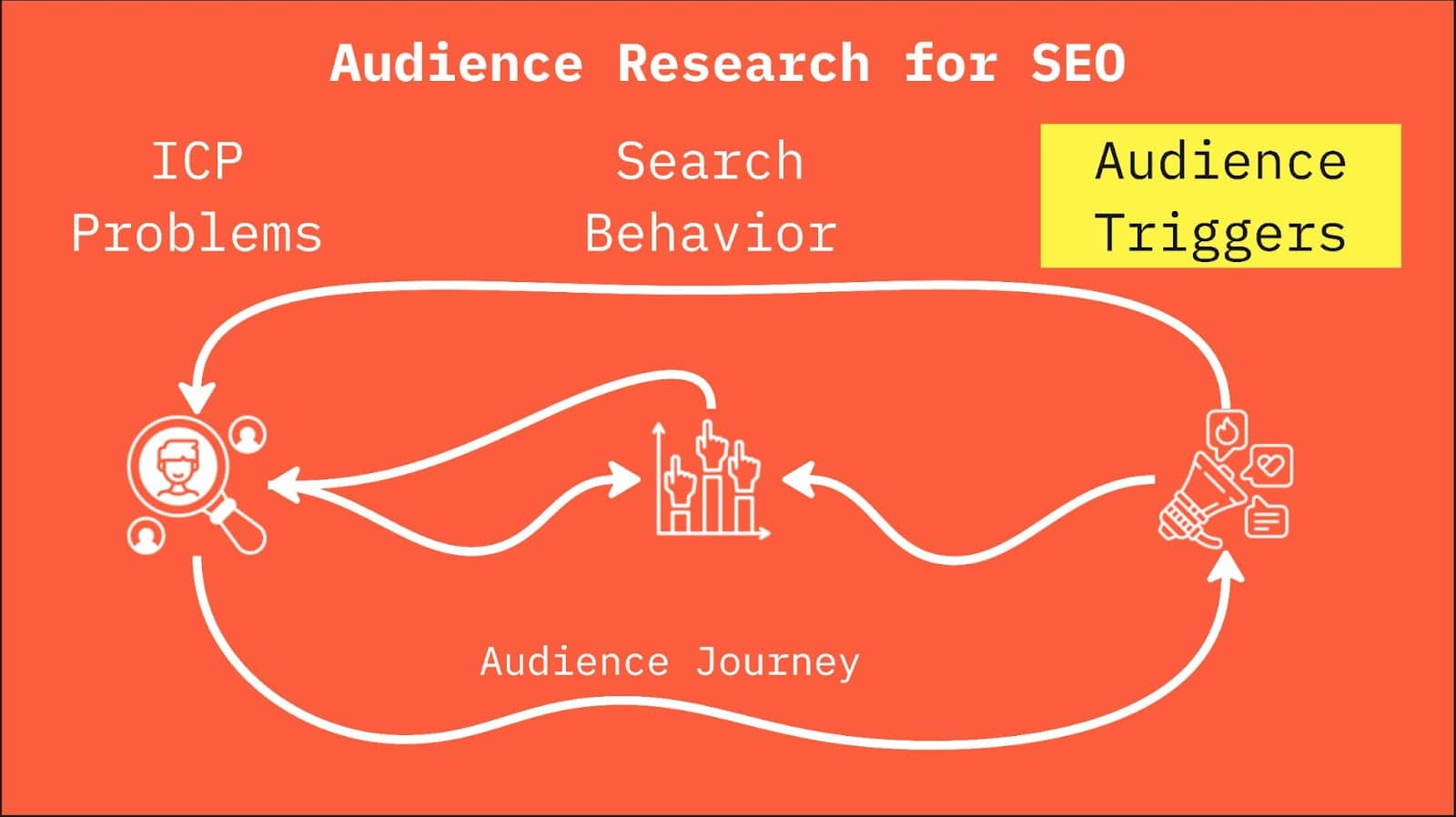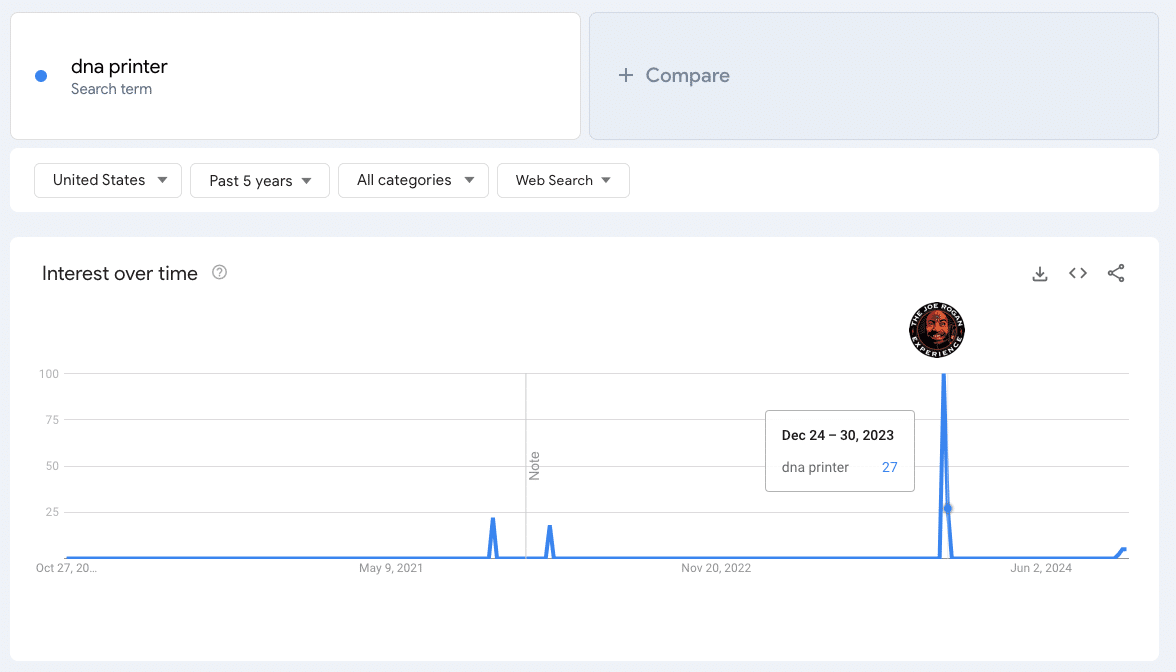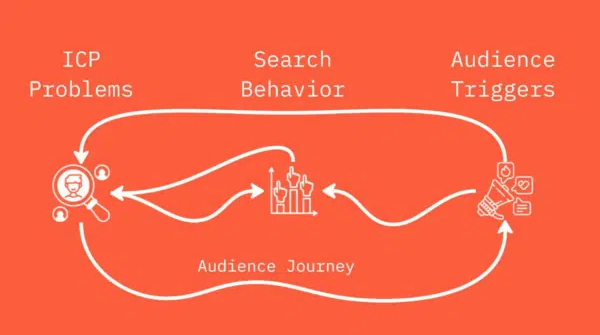How to do audience research for SEO
This streamlined process lets you uncover search behavior, map audience intent and find SEO opportunities even with limited resources.
To succeed in SEO, it’s essential to understand what your audience is searching for and why.
Audience research goes beyond basic demographics, diving into the intent behind search queries to reveal what truly drives people’s decisions.
By analyzing search behavior, you can map out an audience journey that aligns with their needs, allowing you to create SEO strategies that are both targeted and effective – without needing extensive resources. Here’s how to get started.
Traditional audience research: Methods and limitations
Traditional audience research is a broad process that gathers, analyzes and interprets audience insights around a persona. These analyses can include:
- Demographic characteristics: Age, gender, job, etc.
- Psychographics: Interest, hobbies, values, lifestyle.
- Firmographic: Company type, size, etc.
- Behavioral insights: Action trends and patterns.
To traditionally gather this data, a researcher would ask questions directly to the customer or audience, doing things like:
- Voice of customer (VoC) surveys: Survey customers to understand their problems.
- Focus groups: Interview a small number of people similar to your audience profiles.
- Interviews: Interview customers one-on-one.
David Ogilvy, the founder of Ogilvy & Mather and often referred to as the “Father of Advertising,” highlighted a key issue with traditional market research:
“The problem with market research is that people don’t think how they feel, they don’t say what they think and they don’t do what they say.”
Instead of conducting time-consuming studies to build personas, audience research tools can help you identify audiences. However, they have significant limitations in finding and analyzing behavior and what drives behavior.
- Similarweb: Robust audience insights to find audience segments online based on websites they visit.
- Audiense: Create a list of influencers, social or websites to find audiences based on their affinity to a website.
- Brandwatch: Use keywords to search conversations across social and press.
There’s a better way to uncover actionable audience intelligence that is executable for most SEOs.
A better way for audience research in search
Audience research for SEO involves analyzing search behavior patterns around a set of problems to understand search intent.

Intent is what someone tries to accomplish (goal or objective) and what they want in that specific situation.
To uncover the intent of a search, build an audience journey map based on your ideal customer’s problems:
- Ideal customer problems: Who is the customer, what do they want, what are their problems and what questions do they have?
- Analyze search behavior data: How people search for brands or topics related to their problems/opportunities.
- Identify drivers: What conversation or expert is driving the audience to search?
The ideal customer problem profile
Who is your ideal customer (e.g., what does your best customer look like) and what problems do you solve for them?

In every transaction, people are either trying to solve a problem or seize an opportunity.
This need defines their intent, which often goes deeper than the typical categories of transactional, informational or navigational intent.
To truly understand search intent, you must first identify the underlying problem and what the person hopes to achieve by solving it.
Most audiences need help understanding what they want, so analyzing behavior can be a proxy for their desires. Uncovering what positioning or messaging drives this behavior is the closest you can get to intent.
Uri Levin, a two-time unicorn builder and author of “Fall in Love with the Problem, Not the Solution” puts it:
“At the end of the day, the entrepreneurial journey is about value creation, and the simplest way to create value is to solve a problem.”
In this step, identify a list of your ideal customer profiles (ICPs) and the problems you can solve.
The next step is understanding how your audience behaves on their journey to solve these problems.
The search behavior
Search behaviors are the trends and patterns of an audience’s journey to finding a solution to their problems.

For example, when someone reads an article about an amazing new weight loss device that allows users to lose weight and build muscle without workouts, they will search Google or social media for the device name or maybe just a “new weight loss device.”
Using a search engine or platform search function is a natural pattern people follow. Robert B. Cialdini, author of “Influence: The Psychology of Persuasion,” calls these “Click, whirr,” which are fixed-action patterns in people’s behavior.
Most people use natural search patterns to understand problems and solutions deeper.
After reading content on social or in the press, people use search engines to research the topic.
- Up to 79% of people say they’re more confident when they feel they’ve done the necessary research, according to Google. And 75% of people say they cross-check multiple sources to validate facts. Many use search engines to do that.
- People are influenced by social media and the press but use search engines to find information, with search engines driving 70% of visits in one study.
Search engines are a fixed-action pattern touchpoint on your audience’s journey to solve their problems.
Now, we need to understand what is driving these patterns.
The triggers
Triggers are actuators of search behavior that can significantly impact the nature, direction or magnitude of trending search behavior.

If audience search behavior shifts, the shift has triggers.
Triggers change an audience’s state. These can be changes to internal thoughts (“The best brand is X”) or external actions (“I need to search for X”). Analyze these triggers to find what’s driving behavior.
Triggers can be internal (internal to a person, organization or system) or external (broad environmental impact).
An example of a trigger is when the Wall Street Journal publishes an article about solving the weight loss problem and lists several products to help. The readers will then search for more details about the product or type of product.
Sometimes, a single article can generate hundreds of brand searches, while other times, a company or product’s messaging has to be seen several times before it drives action.
These drivers explain why a trend is happening by identifying the root cause.
Understanding triggers can help marketers with the following:
- Strategic decision-making: Leverage trends or create them to accomplish goals.
- Keyword opportunities: Based on the audience journey stage or need, identify which content should be seen for which keywords.
- Content planning and distribution: Identify which sites your audience visits for information related to their problem and any gaps in information they need.
- Create linkable assets: Identify what content an audience will share and engage with.
- Design funnels: Plan out messaging and UX funnel to push the audience further toward a decision.
The journey
An audience journey map is a visual map of the decision-making process someone goes through to solve a problem and accomplish something.

The journey is the path an audience takes to solve their problems. It shows the intent, along with the touchpoints and messaging experienced at each step.
The problems, opportunities or questions the audience has at each step tell you what your audience is searching for.
The key elements of a journey include:
- Problems: Issue that must be solved.
- Opportunities: Benefit(s) of solving the issue.
- Questions: Questions need to be answered to make good decisions.
A journey can have different stages, but I would start with:
- Awareness: A significant problem exists.
- Discovery: Find solutions.
- Decision: Select a solution.
The journey map will give you a structure and context to understand why the audience is reacting to the drivers. Why the drivers are important. And what drivers matter most.
How to research audience search behavior
These are simple steps to analyze our audience’s search behavior. We are creating an audience journey map to uncover how your audience decides to solve their problems.
The end output is an audience journey map, that will guide on-page content, keyword targeting or even PR and SEO funnels.
ICP’s values: Ideal customer problem profile
Below are the steps for identifying your ICP, developing a problem profile and mapping the audience’s journey to find a solution.
- Define your ideal customers: Consult with sales or interview your top clients. Ask questions like, “Who are our most profitable and easiest-to-retain clients?”
- Develop a problem profile: Map out the primary problems your ICP faces, the opportunities these problems present and the specific tasks they need to accomplish. Break down each problem into its core elements and related challenges.
- Map the customer journey: Outline the customer journey by listing key problems, opportunities and jobs to be done at each stage.
- Build a keyword list: Based on the identified problems, opportunities and questions, create a keyword list that captures your ICP’s search behavior around these issues.
A key part of this step is creating a problem map, a simple tool that organizes the target problem along with its related problems and underlying elements. This map helps clarify the scope and context of the primary issue.

Take the problems and map them to the audience’s journey stages.
Let’s go through a basic example with eBikes.
Each journey map is created based on a few key aspects of the ideal customer profile.
- Archetype: Americans in cities that want to reduce their carbon footprint.
- Problem: Buy an eBike to reduce your carbon footprint.
- Situation: Commuting or running errands in a congested city and creating pollution.
Audience journey map elements and answers:
- Awareness
- Problem: Save the environment with eBike.
- Opportunity: Reduce gas with eBike.
- Questions: How much gas can I save?
- Discovery
- Problem: A lot of eBikes, limited budget.
- Opportunity: Cheap eBike.
- Questions: Which eBike is the longest range for the cost?
- Decision
- Problem: Limited storage in the apartment.
- Opportunity: Folding eBike.
- Questions: How easy is it to fold?
See how “eBike” changes meaning when it’s considered a problem and not a product.
Create an audience journey map at this stage to have a framework to uncover questions across the decision-making journey.
With some problems mapped to a journey, then find an audience interested in solving them.
Audience search behavior: Find patterns
Use Google Trends to analyze audience behaviors and uncover patterns in their responses to various triggers, such as articles, social posts or consistent messaging over time.
These insights reveal how audiences engage with content related to their problems and objectives.
Types of analysis:
- Brand search patterns: Compare competitor’s brand name search.
- Executive search patterns: Search for executive names or info.
- Problem search: How do they search for elements of the problem?
- Category search: Trends in search interest for the product/service type.
- Questions: What questions do people have? (e.g., searches for “what is X.”)
Steps to identify audience search behavior patterns:
- Conduct keyword searches: Identify key terms related to your brand and the specific problems your audience is trying to solve.
- Spot patterns: Use Google Trends to track audience trends over time. Look for specific dates or periods when interest spikes.
- List key questions: Compile questions that arise from your analysis of media and social conversations.
In the eBike example, I used Google Trends and Glimpse (Chrome plugin to add in more data points) to analyze:
- The company “Lectric eBike.”

- General U.S. interest in “eBike.”

- Specific eBike feature “folding eBike.”

The trends show that the industry and Lectric’s brand are growing together, so we should analyze this audience’s search behavior to see why interest is growing for both topics.
You can add this to the audience journey map elements. This is just a starter template.
- Awareness
- Problem: Save the environment with eBike.
- Opportunity: Reduce gas with eBike.
- Questions: How much gas can I save?
- Trends: Growing interest in “ebike” and “folding ebike.”
- Discovery
- Problem: A lot of eBike, limited budget.
- Opportunity: Cheap eBike.
- Questions: Which eBike has the longest range for the cost?
- Trends: Growing interest in “best eBike.”
- Decision
- Problem: Limited storage in an apartment.
- Opportunity: Folding eBike.
- Questions: How easy is it to fold?
- Trends: Brand search for Lectric eBike is growing YoY.
With trends identified, the final step is to identify what is driving the conversations.
Tip: In many cases, search trends with very small audiences don’t show up on Google Trends. You can sometimes find micro-trends in Google Search Console, analyze competitor keywords or analyze publisher rankings.
Search triggers: What drives behavior
Identify triggers by analyzing trending topics and the messaging around them, along with the platforms (social media, press, blogs, podcasts) and influencers or experts who amplify these messages.
Examine conversations across these channels to understand what drives search behavior. Look for popular stories, influential discussions or brands with high mention volumes and any emotionally charged topics that might provoke strong audience reactions.
Make sure to analyze both:
- Internal triggers: Use a PEST (political, economic, social, technology) analysis as a proxy for internal triggers.
- External triggers:
- Messaging: What is being said about the topic?
- Platform: What sites, publishers or social networks mention the topic?
- Experts: What trusted experts are discussing the topic?
Steps for analyzing audience triggers
- Conduct a PEST scan: Review Google News, industry publications and key influencers from the past year to identify political, economic, social and technological factors impacting your audience.
- Find trends and posts: Use tools like Brandwatch or Buzzsumo to compile articles and social posts discussing relevant topics.
- Analyze messaging: Examine the perspectives and messaging from media sources, influencers and experts to understand common themes and viewpoints.
- Look at social platforms where users discuss personal experiences related to your brand or topic (e.g., “I have a small apartment and use a folding eBike”).
Grok recently gained access to the X feeds directly, so you can now analyze X’s posts in real time.
With the “eBike” search, I asked Grok to analyze trends in X posts to see what conversations are driving search growth for “eBike.”

This simple question provided insights on optimizing the user experience for SEO.
Two major barriers to adoption are high costs and limited storage. The popularity of the “folding eBike” trend aligns well with storage concerns.
If your product includes a folding eBike, consider highlighting this feature prominently on the landing page or in the site navigation.
For non-folding models, emphasize storage solutions or quick-release wheels for easy removal and compact storage.
Tailoring content in this way addresses key audience needs, making the page more relevant and engaging.
Here’s a sample audience journey map for “eBike.”
- Awareness
- Problem: Save the environment with eBike.
- Opportunity: Reduce gas with eBike.
- Questions: How much gas can I save?
- Trends: Growing interest in “eBike.”
- Drivers:
- Messaging: Pandemic, lower carbon footprint.
- Platform: Green and national press about eBikes.
- Experts: Electric Bike Report.
- Timing: Consistent messaging about eBikes over time after the pandemic.
- Discovery
- Problem: A lot of eBikes, limited budget.
- Opportunity: Cheap eBike.
- Questions: Which eBike has the longest cost range?
- Trends: Brand search for Lectric eBike is growing.
- Drivers:
- Messaging: eBikes have high costs and storage is an issue.
- Platforms: X, green publishers, eBike publishers.
- Experts: Rob Rides EMTB.
- Decision
- Problem: Limited storage in an apartment.
- Opportunity: Folding eBike.
- Questions: How easy is it to fold?
- Trends: Conversations around car emissions + eBike.
- Drivers:
- Messaging: Low-cost eBike with simple storage options.
- Platforms: Search, YouTube, eBike publishers.
- Experts: Rob Rides EMTB
Although my analysis was limited, I identified potential strategies related to the topics of “folding” and “costs.”
For an eBike landing page, I would address both cost and storage concerns by highlighting storage options or emphasizing the folding feature.
You could even consider ranking for keywords like “guide to folding eBikes” or present innovative storage solutions for non-folding models to spark audience discussions.
This could also create demand for alternative storage solutions, particularly as interest in folding eBikes continues to grow.
However, a word of caution: Grok is still a new tool, so it’s uncertain whether it’s identifying true trends or just reflecting isolated conversations.
Top tips:
- Look for action-oriented content that drives short-term actions when a person is trying to solve a problem (e.g., how-to, list of top things). These articles can drive search and short-term leads or sales since the audience wants to find a product or service.
- Sometimes, a single podcast, news article or discussion among a small audience can drive search interest for a highly targeted and valuable audience, but it can be difficult to find. Podcasts are great places to drive search. For example, the screenshot below shows a spike in the search for “DNA printer,” which was driven by a discussion in episode 2076 of the Joe Rogan Experience. It shows there’s an interest in an under-discussed topic, at least.

Inform your SEO strategy with audience insights
This process reveals how audiences react to messaging and available solutions, uncovering their hidden intent through search behavior trends and triggers.
By leveraging these insights, you can boost brand search volume, establish yourself as an expert in trending topics or increase demand for specific keywords.



